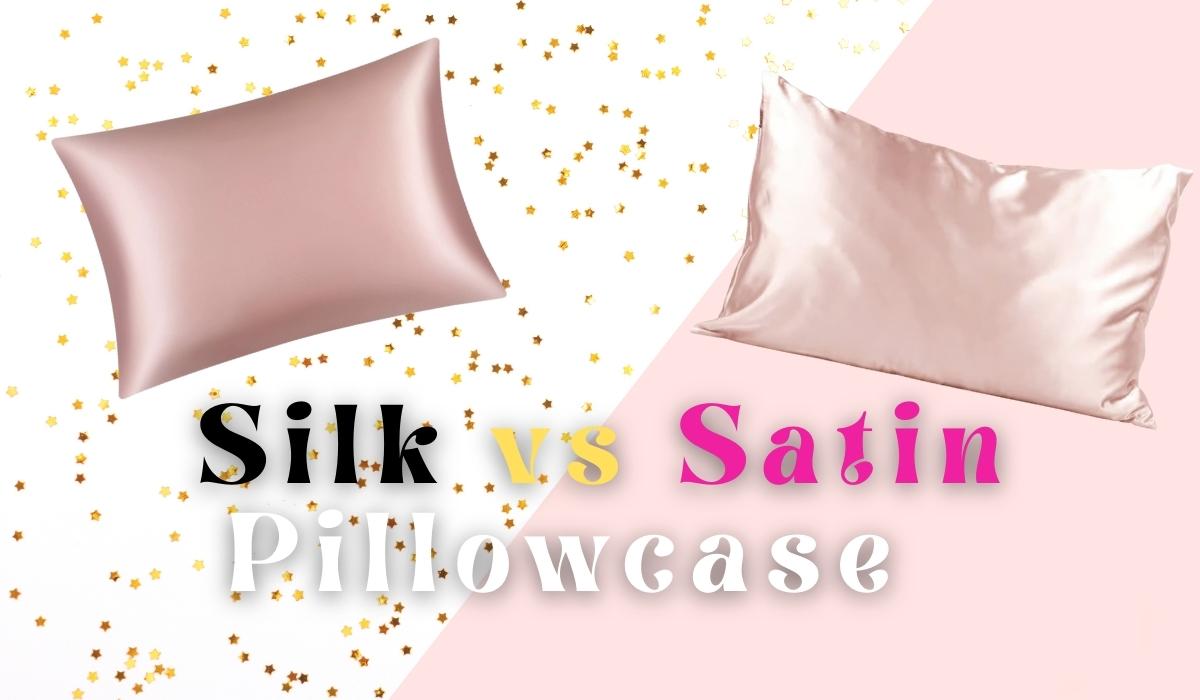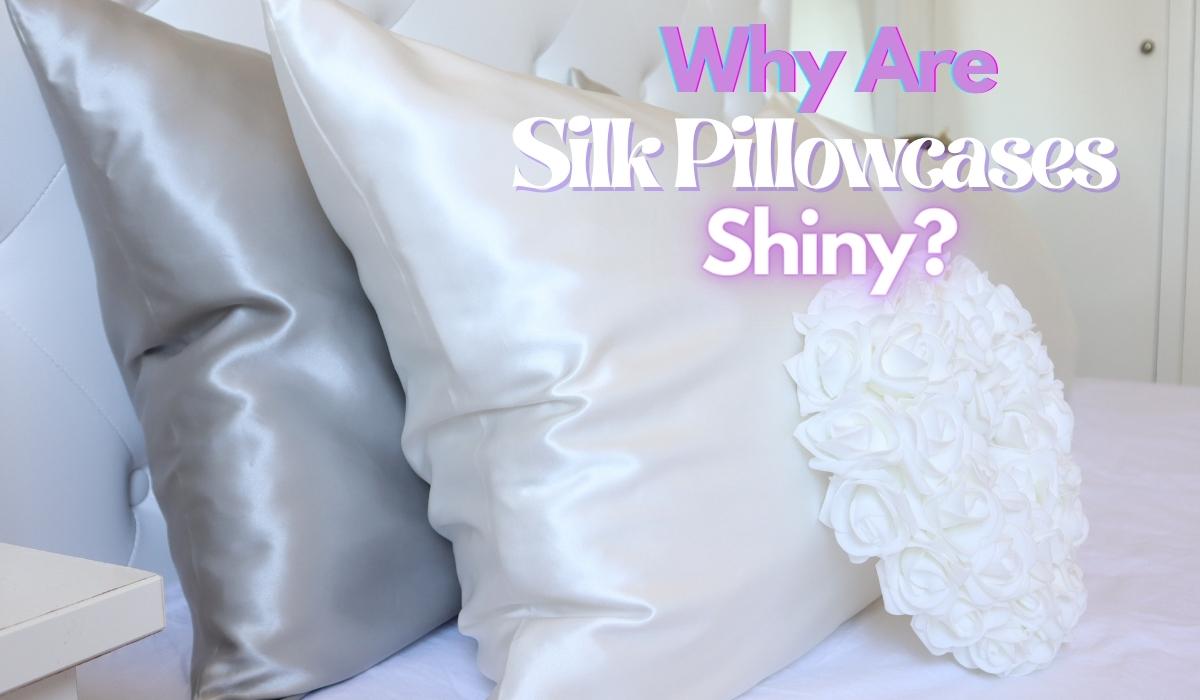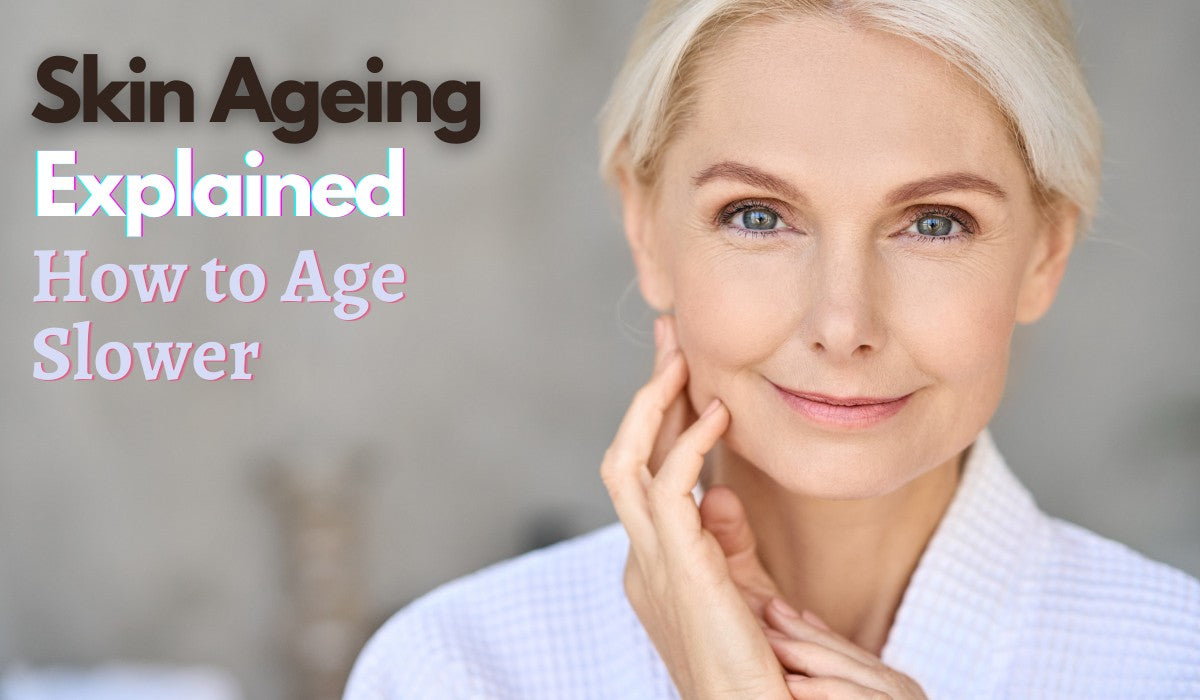
Silk vs Satin Pillowcases: Which is Better for Your Hair, Skin, and Overall Health?
Tired of waking up with messy hair, frizz, and sleep creases? Silk and satin pillowcases have risen in popularity, promising to help alleviate these common issues. Many people are now turning to these pillowcases to improve their hair and skin. But how do you choose between silk and satin?
In this blog post, we will explore the differences between silk and satin pillowcases, and help you determine which one is the best choice for your hair, skin, and overall health. We'll focus on the benefits of silk pillowcases for hair and skin, and compare them to satin pillowcases in terms of their material, feel, advantages and disadvantages.
Table of contents
- Silk Pillowcases: A Natural Luxury
- Silk Pillowcase Hair Benefits
- Silk Pillowcase Skin Benefits
- Silk Pillowcase Health Benefits
- Satin Pillowcases: A Budget-Friendly Synthetic Alternative
- Silk vs Satin: A Comparison
- Conclusion
Silk Pillowcases: A Natural Luxury
Silk was first discovered more than 5,000 years ago in ancient China. Mulberry silk is the highest quality silk available Worldwide. It is produced by silkworms that are raised in controlled conditions and can only be fed mulberry leaves.
It takes almost 3,000 cocoons to produce 1 yard (~90 cm) of woven silk cloth. And, to produce those cocoons takes a whole lot of mulberry leaves. It's a lengthy and expensive process.
This luxurious material is known for its shine, softness, durability, beauty benefits, and breathability. Let's dive into the benefits of using a silk pillowcase for hair, skin, and overall health.

Silk Pillowcase Hair Benefits
Many people opt for a silk pillowcase because of its hair benefits. Here are the main ways how using a silk pillowcase can improve your hair:
-
Reduced Friction: The smooth surface of silk pillowcases reduces friction between your hair and the pillow, your hair glides over the pillowcase, minimising bedhead, frizz, hair breakage, split ends, and tangles. This is particularly important for individuals with curly, frizzy, or fragile hair, as it helps maintain the hair's structure and prevents damage during sleep.
-
Moisture Retention: Silk's natural moisture-wicking properties help to maintain your hair's optimal moisture levels, preventing it from becoming excessively dry or oily. This can be especially beneficial for those with dry, damaged, or chemically treated hair, as it ensures that your hair remains well-hydrated and healthy.
-
Reduced Static: Silk pillowcases can help to reduce static electricity in your hair, which often causes flyaways, frizz, and tangles. By minimising static, silk pillowcases help to keep your hair smooth and manageable, reducing the need for additional styling products and heat-styling tools (that are known to cause more damage and frizz).
-
Maintain Hairstyles: Sleeping on a silk pillowcase can help maintain your hairstyle for a more extended period, reducing the frequency of washes and the need for heat styling. This is especially helpful for those with styled or colour-treated hair, as it helps to preserve the hair's integrity and prolong the life of the style or colour. Many people report waking up with beautiful smooth hair, looking the same as before bed.
Silk Pillowcase Skin Benefits
Silk pillowcases can help to slow down the ageing process and keep your skin hydrated while you sleep. Here are a few ways how sleeping on a silk pillowcase improves your skin:
-
Preventing Sleep Lines and Wrinkles: The smooth surface of a silk pillowcase allows your skin to glide effortlessly across the pillow, reducing the friction that can cause sleep lines and wrinkles. This can be particularly beneficial for side sleepers, who often experience more significant facial creasing due to pressure on one side of the face. These creases would turn into permanent wrinkles over time.
-
Moisture Retention: Silk is a natural, breathable fabric that helps to maintain your skin's moisture levels. Its moisture-wicking properties prevent your skin from becoming too dry or too oily, allowing it to maintain a healthy balance. This can be especially beneficial for those with dry or combination skin types, as it ensures that your skin stays well-hydrated throughout the night.
- Not Absorbing Your Skin Care Products: Unlike cotton, that tends to attract and drain moisture, natural oils from your skin, and your skin care products, silk pillowcases don't absorb it, allowing your skin to get all the care it needs.
Silk Pillowcase Health Benefits
Silk is a natural and hypoallergenic material, making it an excellent choice for those with sensitive skin or allergies. Here are a few ways how silk pillowcases may benefit your health:
-
Hypoallergenic Properties: Silk is a naturally hypoallergenic material, which means it is resistant to dust mites, mould, and other allergens. This makes silk pillowcases an excellent choice for those with sensitive skin or allergies, as they can help reduce inflammation and irritation caused by allergens in your sleep environment.
-
Antimicrobial and Anti-inflammatory: Silk contains a natural protein called sericin, which has antimicrobial and anti-inflammatory properties. These properties can help prevent the growth of bacteria and fungi on your pillowcase, reducing the chances of developing acne and other skin irritations. Additionally, the anti-inflammatory nature of sericin can help soothe irritated or inflamed skin, promoting a healthier complexion.
- Natural and Breathable: As a natural, breathable fabric, silk allows for better air circulation and temperature regulation, creating a comfortable and healthy environment for your facial skin and the scalp. This improved air circulation can help prevent the buildup of sweat, bacteria, and excess oil, which can contribute to acne, scalp irritation, dandruff, and other skin or hair issues.
-
Temperature Regulation: Silk's natural breathability and temperature-regulating properties help to keep your skin cool and comfortable throughout the night, which can improve your sleep quality and overall health. By preventing overheating, silk pillowcases can help you to fall asleep faster, reduce insomnia, and minimise excessive sweating. Cooling properties make silk an ideal choice for those going through menopause.
Satin Pillowcases: A Budget-Friendly Synthetic Alternative
Satin is often confused with silk. However, Silk is a fabric, while satin is not. Satin is a weaving technique. Satin pillowcases are made from synthetic materials such as polyester or nylon. Polyester is made of plastic, and is usually derived from petroleum. Same as polyester, nylon is also derived from petroleum. These materials are woven to create a smooth, shiny fabric that resembles silk. Let's explore the benefits of satin pillowcases in comparison to silk pillowcases.

-
Satin Pillowcase Hair Benefits: Similar to silk, satin pillowcases can reduce friction between your hair and the pillow, helping to prevent hair breakage and tangles. While not as effective as silk, satin is still a good option for those looking to protect their hair during sleep.
-
Satin Pillowcase Skin Benefits: Satin pillowcases also offer a smooth surface, which can help minimise sleep lines and wrinkles. However, they may not be as breathable as silk, potentially causing skin irritation and acne for some individuals.
-
Cost-Effective: Satin polyester pillowcases are often more budget-friendly than silk, making them an attractive option for those looking to experience the benefits of a smoother pillowcase without the high price tag.
-
Health Benefits/Risks of Satin Pillowcase: There are no known health benefits of sleeping on synthetic fabrics derived from plastic/petroleum. In fact, it comes with several health risks.
Here are some of the possible drawbacks of sleeping on a polyester satin pillowcase:
-
Reduced Breathability: Polyester satin pillowcases are less breathable than natural fabrics like silk or cotton. This reduced breathability can lead to increased sweating and overheating during sleep, which may cause discomfort and even contribute to skin issues like acne or irritation due to trapped moisture.
-
Skin Irritation: Polyester is a synthetic material that may cause skin irritation or allergies for some individuals, particularly those with sensitive skin. Sleeping on a polyester satin pillowcase may exacerbate existing skin conditions or cause new ones to develop. Several satin pillowcase users have reported having a skin rash after sleeping on these pillowcases.
-
Hair Static: Although satin pillowcases help reduce friction between your hair and the pillow, polyester satin may generate more static electricity than natural silk. This static can lead to frizz, flyaways, and tangles, making hair harder to manage.
-
Environmental Impact: Polyester is a petroleum-based material, and its production has a higher environmental impact than natural fibers like silk or cotton. Choosing a polyester satin pillowcase may not be the most eco-friendly option for those concerned about their environmental footprint.
-
Durability: Polyester satin pillowcases are way less durable than natural silk counterparts. Over time, the synthetic fibres may lose their smoothness and shine, reducing the overall benefits for your hair and skin.
While polyester satin pillowcases can offer a budget-friendly alternative to silk, it's essential to consider the potential drawbacks, especially for individuals with sensitive skin, allergies, or concerns about health or the environment.
Silk vs Satin: A Comparison
Now that we've explored the benefits of both silk and satin pillowcases, let's compare them to see which is the better choice for your hair, skin, and overall health.
-
Material: Silk is a natural, luxurious fabric, while polyester satin is a synthetic and cheap looking material. This difference in material affects breathability, moisture-wicking properties, and overall feel. Even though some satin pillowcase brands (Kitsch) may claim that their products are better than silk, take their word with caution.
-
Breathability: Silk is more breathable than satin, which means it can better regulate temperature and moisture, making it a better choice for those with sensitive skin or who tend to overheat at night.
-
Durability: Silk is known as the Queen of all fibres, praised for it's durability. Silk pillowcases are much more durable than satin pillowcases, as they are made from a stronger natural fibre. This means that silk pillowcases will last longer and maintain their smoothness and shine over the years. Of course, choosing a high quality silk pillowcase is crucial, as not all silk pillowcases are created equal. In fact, many silk pillowcase sellers on Amazon sell their cheap, 16 Momme low density pillowcases that are much less durable, pretending to be 19 or 22 Momme silk.
-
Care: Both silk and satin pillowcases require gentle care, but silk may need more specific care instructions, such as hand washing or using a delicate cycle with a gentle detergent. Satin pillowcases, being made from synthetic materials, are generally easier to care for and may be more forgiving with regular washing.
- Price: Silk pillowcases tend to be more expensive than satin due to their high manufacturing costs, natural fibres, luxurious feel, and countless benefits. Satin pillowcases, on the other hand, are cheap, because they are made from cheap plastic. However, the investment in a silk pillowcase may be worth it for the long-term benefits to your hair, skin, and overall health.
Conclusion: Which is Better for Your Hair, Skin, and Overall Health?
When choosing between silk and satin pillowcases, it's essential to weigh the benefits and drawbacks of each. If you're looking for a natural, luxurious, and breathable option with long-lasting benefits for your hair, skin, and overall health, and don't want your pillowcase to tear apart after one wash, a silk pillowcase is the way to go. Its hypoallergenic properties and superior moisture-wicking abilities make it an excellent choice for those with sensitive skin, allergies, and those who prioritise their heath.

On the other hand, if you're on a tight budget and still want to experience some benefits of a smoother pillowcase, satin may be a suitable alternative. While not as breathable or durable as silk, satin pillowcases can still provide a smooth surface to help prevent hair breakage and sleep lines on your face. It might be a stepping stone before transitioning to natural silk.
Ultimately, the choice between silk and satin pillowcases comes down to personal preference, budget, and individual needs. Whichever option you choose, you'll be one step closer to waking up with healthier hair, smoother skin, and a refreshed feeling every morning.
Next, read:





